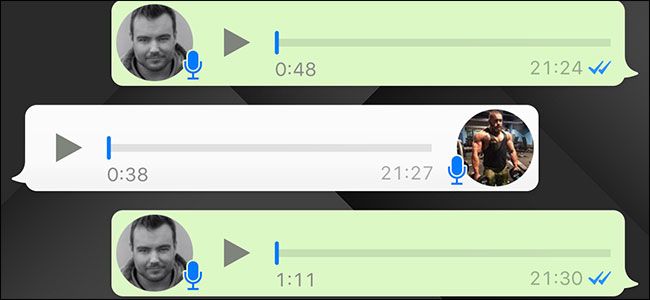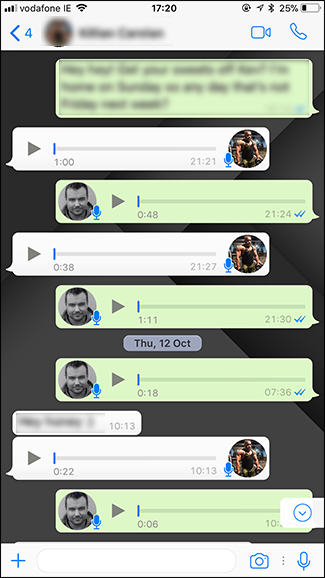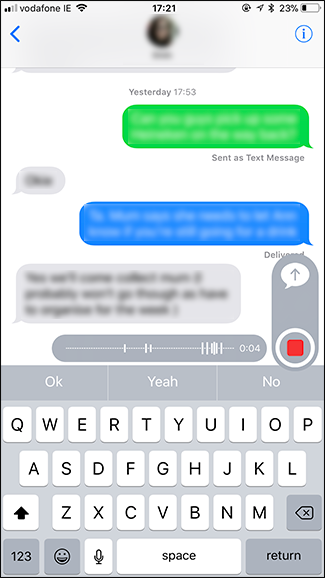Text messaging sucks. If you think about it, it’s a pretty inefficient way to communicate. It’s slow, lacks nuance, and it’s easy to make mistakes. Smartphones with huge touch screens have a lot going for them, but making texting easy isn’t one of them.
Thankfully though, there are other options. Most major messaging apps—including iMessage, WhatsApp, and Facebook Chat—have other ways for you to communicate: you can send emoji, photos, videos, and---most importantly for me---voice messages, which have some serious advantages over pure text messages.
Voice messaging is quicker. Typing texts on a touch screen is slow and awkward, it’s easy to make mistakes (which you have to go back and correct), and you have to look directly at the screen the whole time. Even if you’re a really quick texter who rarely makes mistakes, it’s still likely to be slower than the speed at which you talk.
Voice messaging can be done one-handed, which means you can do it pretty much anywhere. Even “normal” sized modern smartphone like the regular iPhone 8 or the Google Pixel have huge screens. I haven’t been able to properly use a smartphone with one hand since the iPhone 5S, let alone text properly on one. With voice messaging you just have to hold down a single conveniently placed button and talk. No awkwardly balancing your phone on your fingers required.
Voice messages avoid more misunderstandings. The worst thing about text messaging is the lack of nuance. Who hasn’t accidentally upset someone because you meant a text to be read one way and they took it another? You can get some of the way there with emoji, but it’s still not the same. Was your smiley face sympathetic or sarcastic? Voice messaging has all the nuance you could want, short of having a sit down conversation. If you’re telling a joke, they can hear it in your voice. If you’re angry, they’ll know about it. It’s much much harder to end up in the doghouse because you’ve been misconstrued.
Voice messaging even has a couple of advantages over actual phone calls. Since it’s asynchronous, the other person doesn’t need to be available to pick up their phone; they can check your message and respond whenever they want. You also can’t be drawn into a long conversation or get interrupted.
Now, voice messages aren’t perfect. They have a few flaws that in some cases may be deal breakers. Voice messages obviously aren’t silent to send or receive (without headphones). If you’re in public people can overhear you. There are also times it will be socially unacceptable to start talking to your phone. Voice messages are harder to scan quickly and you can’t search them. This makes them less suitable for sending information like your address or a phone number.
On balance though, I think audio messages are a pretty clear winner. If you haven’t used them, you should try them out.




